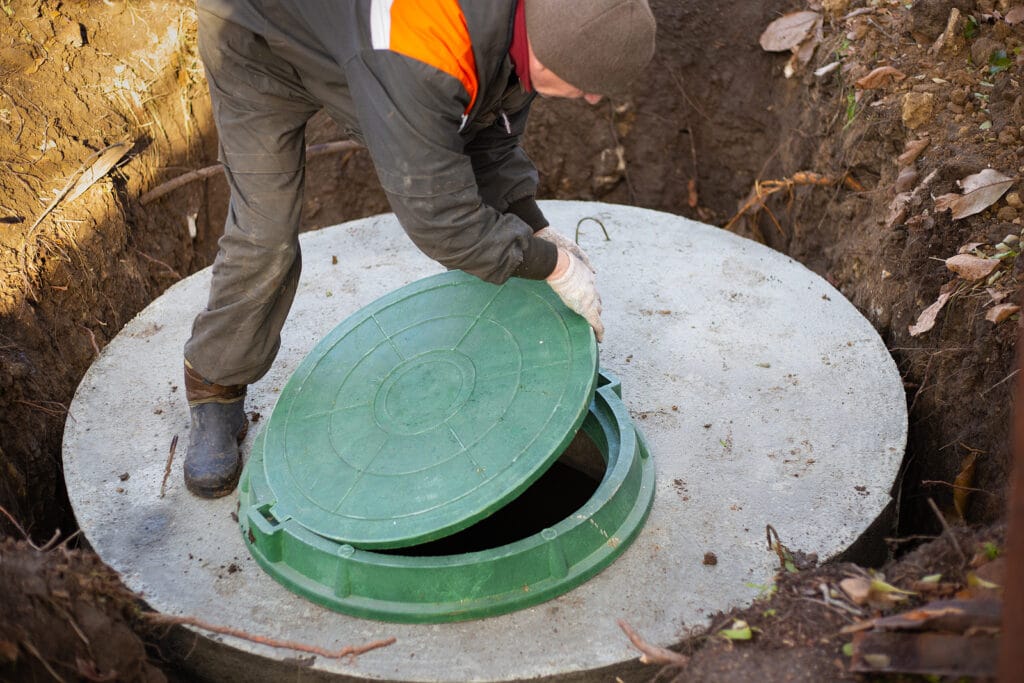Certain aspects of home ownership can be hidden until they cause problems. The septic tank is among that is a crucial but frequently ignored component of a house. We tend to overlook it as if it is able to perform its tasks without worry or maintenance. Like any other type of system, septic tanks will have a life span, and at some point they’ll have to be replaced.

Inexperienced homeowners might struggle to cover the expense of replacing a septic system. It is vital to realize that a variety of factors influence the cost of a Septic tank.
To figure out the true cost of a tank replacement, it is important to take into account more than the price. It is not merely a matter of replacing the old tank with a brand new one. The cost will be affected by a variety of services and components. Each step, from getting permits, hiring professionals and excavation to installation, will cost money. The homeowners must plan their budget accordingly.
The expense of replacing the septic system, which includes installation charges for the leach field, as well as the it’s septic system in general is an important aspect. The price for a new tank can be affected by the dimensions, material used, and the complexity of the construction. In addition, the location of your home, the local regulations and soil conditions could also affect the price. It is essential to speak with experts in septic systems who will determine your exact requirements and provide a detailed estimation. They will take into account things like the dimensions and layout of your leach field, ensuring that you are aware of the total expense when replacing your septic system. project.
The leach or drain field is another significant expense. This component is crucial to the treatment and dispersal of the wastewater. It is essential to consider the best option when replacing a damaged or defective leachfield, or one that has failed. This can be a major factor in the cost of a replacement septic system. In determining the total cost, it is important to account for aspects like the dimensions and the composition of the leach fields as well as accessibility and the soil composition.
Homeowners should think about the costs for replacing the tank for septic. This can disrupt your routine, requiring to temporarily leave your home or limit the use of water while installation process is underway. It is important to consider this inconvenience when planning the project, as it can disrupt your daily life and result in additional expenses.
It is important to be aware that proper maintenance and treatment of your septic systems is essential to prolong their life and reduce the risk of premature replacement. Neglecting routine maintenance tasks can lead to more significant issues later on including the tank failing or damage to the drainfield. The inclusion of septic system maintenance expenses into your budget is a smart decision that will save money in the long run.
By now, you may have realized that determining the septic replacement cost is not a straightforward task. The cost of a replacement septic tank will be determined by a variety of factors. These include the dimensions, materials and complexity of installation as well as the state of your leach field. Your property’s location and laws will also have an impact on the cost. For an accurate cost estimate You should speak with an expert who is experienced in the repair of septic systems.
If you’re looking to replace your septic tank, you might be shocked to discover that there are hidden expenses which you’ve not anticipated. These expenses can be incurred quickly, which is why it’s vital to know about them before you make a decision.
The hidden costs associated with the replacement of septic systems include:
The cost of inspections and permits. The local government will require permits prior to beginning your work to replace your septic systems. The permits can be expensive and you could need to pay additional for inspections.
The cost of removal and excavation. The old septic system will need to be excavated and removed before the new system can be installed. This could be a costly process, especially if the older system is situated in a difficult-to-access area.
The cost of backfilling and grading. The remaining hole after the removal of the old system will need to be graded and backfilled. This is essential to ensure that the new system is properly draining.
The expense of landscaping. You might need to plant a garden in the area after installation of the new system, to maintain it in a neat and tidy manner. This can be costly, particularly if landscaping services are needed.
Planning for a septic replacement should include hidden costs. This will prevent any unpleasant surprises.
The green solutions are an excellent option for homeowners who are budget conscious. These eco-friendly septic systems aren’t just cost-effective alternatives to traditional systems, but they also help to protect the environment by reducing water runoff and pollution. Additionally, eco-friendly septic options are becoming increasingly available and affordable, which makes the ideal choice for those seeking to lower their impact on the environment without spending a fortune. Although there could be upfront costs to transitioning to an eco-friendly system, these additional costs can be more than compensated by savings over the long term. Being green isn’t just an environmental trend, it’s a vital lifestyle change that everyone ought to consider embracing if determined to protect our planet for the generations to in the future. It gives you peace of assurance that you’re helping the world community. This will also make sure that your home functions efficiently and with fewer maintenance costs, as well as less monthly expenses.
